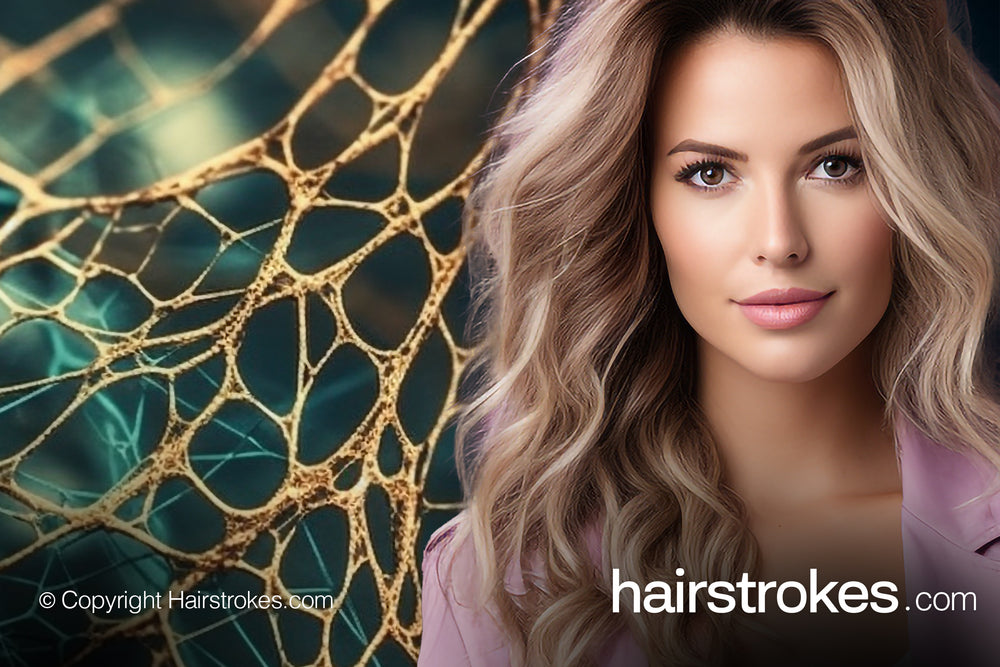Basic facts and background
Etymologically, the term "epidermis" originates from the Ancient Greek words "epi," meaning "over" or "upon," and "derma," meaning "skin." Thus, 'epidermis' refers to the layer of cells atop the skin. Any aspect related to this outermost skin layer is described using the adjective "epidermal."
From the biological perspective, the epidermis is the outermost layer of the skin, serving as a critical barrier between the body and its external environment. This layer is distinct from the two deeper layers of the skin - the dermis and the hypodermis. One of the primary functions of the epidermis is to act as a defense mechanism, protecting the body from environmental pathogens. Additionally, it plays a crucial role in regulating water loss from the body into the atmosphere, known as transepidermal water loss.
Structurally, the epidermis comprises several flattened cells known as keratinocytes, which lie above a basal layer of columnar cells. These basal cells are oriented perpendicularly and are pivotal as they contain stem cells that generate new epidermal cells. As these cells mature, they move upwards, flattening to form the skin's protective outer layers.
The human epidermis exemplifies an epithelial tissue classified as a stratified squamous epithelium. This classification is based on its structure comprising multiple cell layers, with the surface cells appearing flattened. Such a structural design significantly bolsters the epidermis's protective role. The epidermis undergoes a continual renewal process; new cells are generated through mitosis at the basal layer, situated at the epidermis's lower boundary, adjacent to the basement membrane. These new cells gradually migrate to the surface, replacing older cells. This entire cycle of epidermal renewal typically spans approximately 28 days, resulting in the replacement of the epidermis with a completely new layer.
Consistency of epidermis
The epidermis primarily consists of keratinocytes (proliferating basal and differentiated suprabasal), which comprise 90% of its cells but also contain melanocytes, Langerhans, Merkel, and inflammatory cells. Epidermal thickenings called Rete ridges (or rete pegs) extend downward between dermal papillae. Blood capillaries are found beneath the epidermis and are linked to an arteriole and a venule. The epidermis has no blood supply and is nourished almost exclusively by diffused oxygen from the surrounding air. Cellular mechanisms for regulating water and sodium levels are found in all epidermis layers. Basically, this means that we do not feel our epidermis, nor can the removal or piercing of the epidermis hurt us. It protects us from bacteria entering our body, but, as ancient Greeks realized, the epidermis is just like a cover, something that is on top of what our body is. Let us know and explore further how the epidermis protects us.
Why does the epidermis “feel no pain”?
The perception of pain in the skin is primarily mediated by nociceptors, which are sensory neurons responsive to potentially harmful stimuli. In the context of the epidermis and its lack of pain sensation, a few key factors are involved.
Location of Nociceptors: While the epidermis contains free nerve endings, most nociceptors are in the dermis, the layer beneath the epidermis. This deeper positioning of nociceptors is crucial for sensing pain, as these nerve endings are better protected and positioned to signal harm that could lead to tissue damage accurately.
Structure of the Epidermis: The epidermis primarily comprises keratinocytes, specialized cells that do not have the necessary components (like nociceptors) to sense pain. The topmost layer of the epidermis, the stratum corneum, is composed of dead and flattened keratinocytes, which further diminishes any pain sensitivity in this outermost layer.
Function of the Epidermis: The primary function of the epidermis is to act as a barrier, protecting the underlying layers of skin and the rest of the body from environmental factors such as pathogens, chemicals, and physical abrasion. Sensing pain is not a direct function of the epidermis; this role is reserved for the deeper layers of the skin where nociceptors are more prevalent.
While the epidermis contains some free nerve endings that can sense temperature and other stimuli, the majority of sensory processing, especially for pain, occurs in the dermis. This structural organization enables the epidermis to act as a protective barrier, with the dermis handling more complex sensory functions, such as pain perception. Hence, some practitioners often overstate the notion that piercing the epidermis can cause significant pain.
Junctions between the epidermal cells
Despite the epidermis's "flaking off" mechanics, which might lead one to believe it is fragile, epidermal cells are tightly interconnected, forming a robust barrier against external elements.
The connections between epidermal cells are known as adherens junctions, consisting of transmembrane proteins called cadherins. Within the cell, cadherins are linked to actin filaments. In immunofluorescence microscopy, this actin filament network is visible as a pronounced border around the cells, although these filaments are situated inside the cell, parallel to the cell membrane. The proximity and tightness of these junctions cause the actin immunofluorescence to appear as a distinct border between cells.
Layers of the epidermis
The epidermis comprises 4 or 5 layers, varying according to the specific area of skin. These layers, listed from the outermost to the innermost, include the Stratum Corneum, Stratum Lucidum (present only in certain parts of the body like the palms and soles), Stratum Granulosum, Stratum Spinosum, and Stratum Basale.



